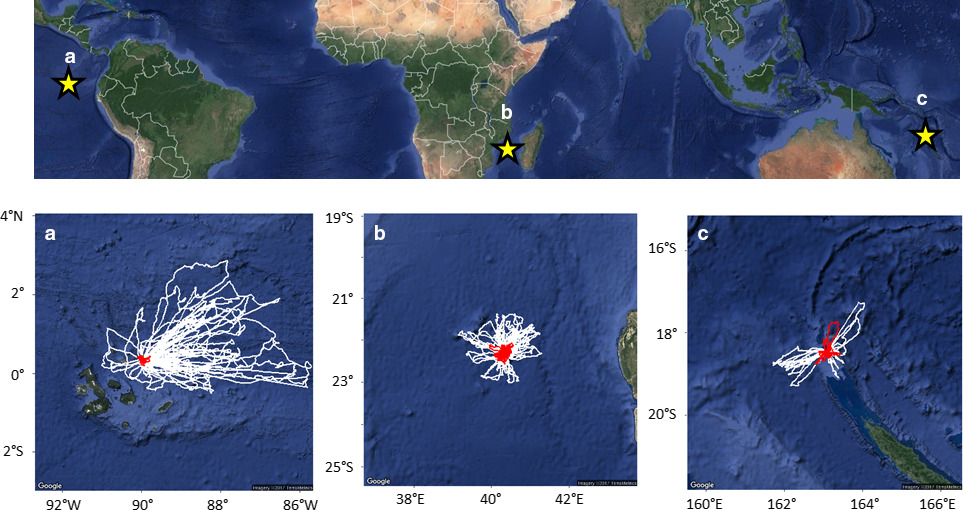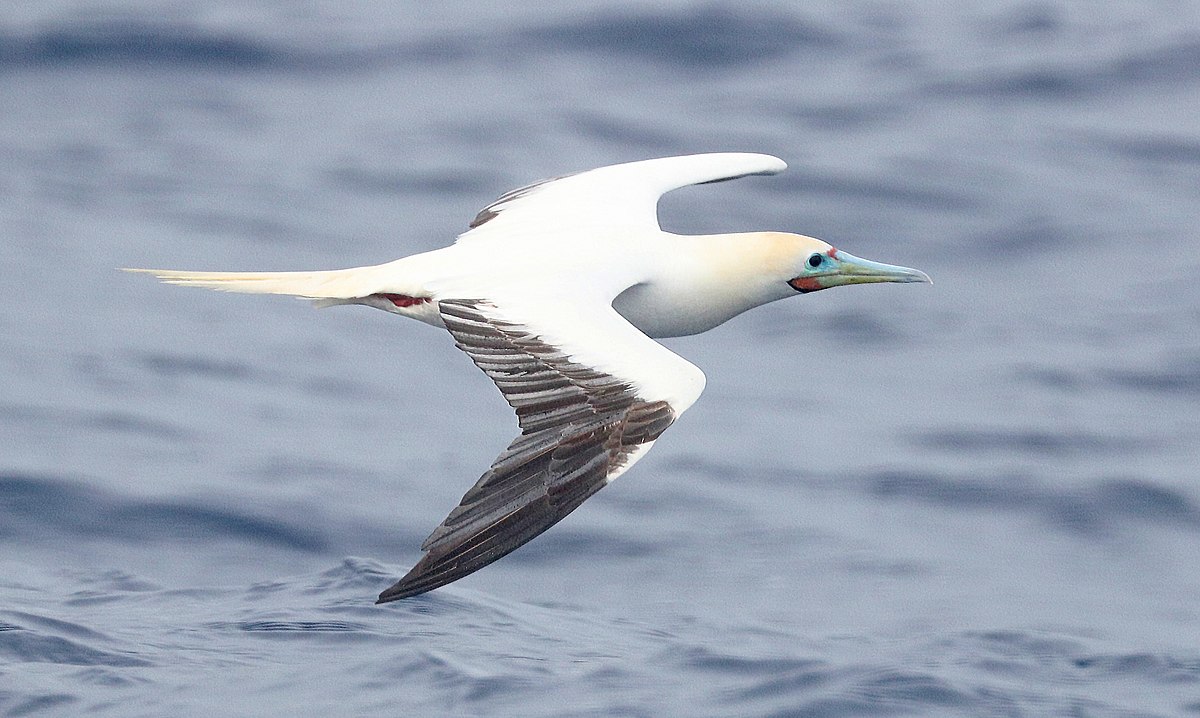LINKED PAPER
Inter‐population variation in the behaviour of adult and juvenile Red‐footed Boobies Sula sula. Mendez, L., Prudor, A. & Weimerskirch, H. 2019. IBIS. DOI: 10.1111/ibi.12779 VIEW
Imagine a busy colony of seabirds. To add some color to your imagination, let’s assume the colony houses thousands of Red-footed Boobies (Sula sula). At sunrise, the adult birds stretch their wings and fly off for a long day of foraging on the open ocean. A few hours later, the juveniles – easily recognizable by their grey feet – follow their parents’ example and leave to colony, searching for a suitable foraging spot. In contrast to their parents, which cover many miles on their own, the juveniles stay relatively close to the colony and cluster together while foraging. During the day, most juveniles return home and enjoy a well-deserved rest on the nest. The adults, however, won’t be back until sunset.
GPS loggers
I did not make up this typical day at a Red-footed Booby colony. It is based on a recent study by three ornithologists: Loriane Mendez, Aurelien Prudor and Henri Weimerkirch. They travelled to three seabird colonies: Genovesa (Galapagos, Eastern Pacific Ocean), Europa (Western Indian Ocean) and Surprise (New Caledonia, Western Pacific Ocean). There, they fitted numerous Boobies with GPS loggers, allowing them to study the foraging behavior of these birds.

Figure 1 The large map shows the locations of the three study sites. The smaller maps (a-c) reveal the difference in flight paths between juveniles (red) and adults (white) at each of the study sites.
Foraging faraway
The results from this study indicated that juveniles forage close to the colony while adults take long trips across the open ocean. Detailed analyses of the GPS tracks revealed that adult birds spend most of their time (about 50%) travelling to faraway foraging spots. The birds typically flew to these places in a straight line, suggesting that they knew where they were going. Why did the juveniles not accompany their parents to these distant feeding spots? The researchers think that the young birds do not have the physical ability to follow their parents on these long trips (Marchetti & Price 1989). Hence, they are forced to stay close to the colony and forage for brief bouts during the day.

Figure 2 Piecharts indicate the different time budgets of adult and juvenile Red-footed Boobies on the three islands. Adults spend most of their time travelling (blue) while juveniles invest a lot of time in foraging (red).
Social learning
Another big difference between adults and juveniles concerns the behavior they exhibit during the day. As I mentioned above, adults spend roughly half their time travelling. Juveniles, however, are mostly occupied with foraging. The GPS tracks of young birds show how they often move in sinuous patterns, indicating that they are flying above a patch of prey (Weimerskirch et al. 2005). The long hours spend foraging also suggest that the juveniles are mostly practicing their foraging skills (Guo et al. 2010, Fayet et al. 2015). They probably need multiple attempts to capture a prey. Moreover, juveniles tend to cluster together during these foraging trainings. This aggregation of Red-footed Boobies might provide opportunities for social learning (Kitowski 2009). If you see your cousin missing the same squid a dozen times, you at least know how not to capture that particular prey.
References
Fayet, A.L., Freeman, R., Shoji, A., Padget, O., Perrins, C.M. & Guilford, T. (2015). Lower foraging efficiency in immatures drives spatial segregation with breeding adults in a long‐lived pelagic seabird. Animal Behaviour 110: 79– 89. VIEW
Guo, H., Cao, L., Peng, L., Zhao, G. & Tang, S. (2010). Parental care, development of foraging skills, and transition to independence in the Red‐footed Booby. Condor 112: 38– 47. VIEW
Kitowski, I. (2009). Social learning of hunting skills in juvenile Marsh Harriers Circus aeruginosus. Journal of Ethology 27: 327– 332. VIEW
Marchetti, K. & Price, T. (1989). Differences in the foraging of juvenile and adult birds: the importance of developmental constraints. Biological Reviews 64: 51– 70. VIEW
Weimerskirch, H., Le Corre, M., Jaquemet, S. & Marsac, F. (2005). Foraging strategy of a tropical seabird, the Red‐footed Booby, in a dynamic marine environment. Marine Ecology Progress Series 288: 251– 261. VIEW
Image credits
Featured image: Red-footed Booby Sula sula | Alan Schmierer | CC BY-SA 1.0 Wikimedia Commons




